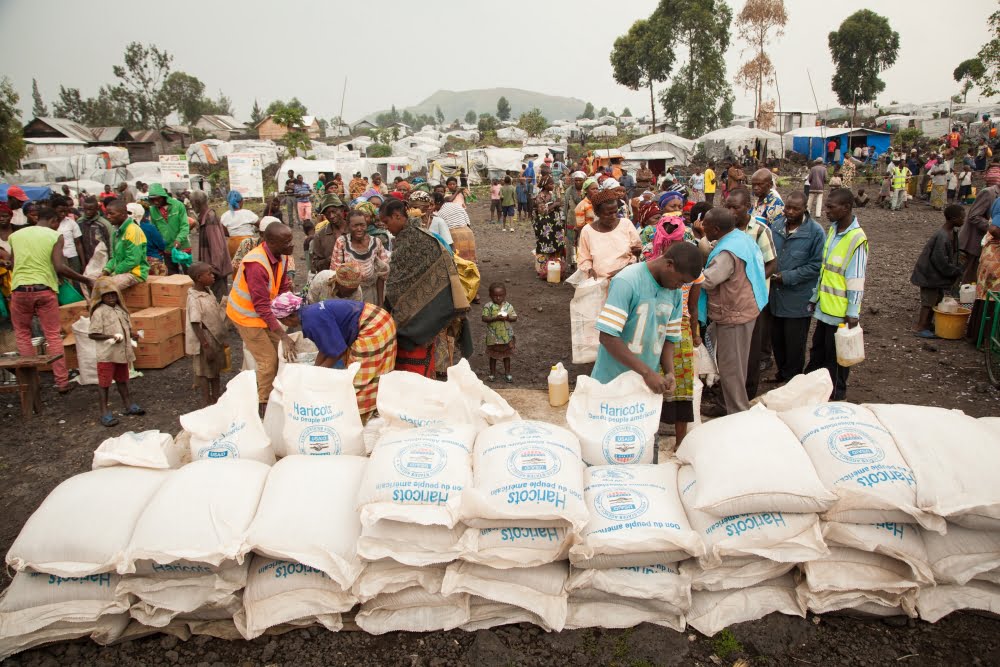With just 10 more years to achieve the Sustainable Development Goals, 43 countries in the world are still facing “serious” levels of hunger, and five have hit “alarming” or “extremely alarming” levels. That’s according to the latest annual Global Hunger Index published recently by Concern Worldwide and Welthungerhilfe.
The index, which ranks 117 mostly middle- and low-income countries, measures hunger according to data on undernourishment, child wasting, child stunting and child mortality.


Coming in at the bottom of the index is the Central African Republic (CAR), as the only country with “extremely alarming” levels of hunger. Relief efforts have been ongoing in CAR for years, particularly after political unrest devastated the economy in 2013 and the latest bout of violence erupted in May 2017. Currently, the World Food Program (WFP) estimates that nearly 3 million people in CAR require humanitarian assistance. CAR also ranked second to last on the 2018 Human Development Index.
Joining CAR near the bottom of the Global Hunger Index are Yemen, Chad, Madagascar and Zambia, with “alarming” hunger levels. Yemen’s food insecurity is largely due to a protracted and devastating war. And although political instability certainly contributes largely to hunger in Chad, Madagascar and Zambia as well, those three countries among the most vulnerable to climate shocks.
In fact, the index report says that the number of people suffering from hunger and nourishment, which was nearly halved from 2000 to 2015, is far from reaching zero, because climate change is undermining progress. The index found that globally, there has been a slight improvement overall in undernourishment, child wasting, child stunting and child mortality since 2000, when the world on average was facing “serious” levels of hunger based on these indicators. Now, the world is “on the cusp of the moderate and serious categories.”
But conflict, inequality and climate change are slowing that progress to the point that last year became the third year in a row that the number of hungry people in the world actually increased. So, by some measures, progress isn’t just slowing; it’s reversing.
The index this year focuses on the impact of climate change, because it’s a “threat multiplier” that impacts most severely “those who have contributed to it the least and often have the least capacity to adapt to it.” For populations that are poor and unstable, climate change is already making so many things worse, including conflict, disaster recovery, displacement, inequalities and more. A changing climate is also affecting the ways that communities are producing food, accessing food, their nutrition and food loss/waste.
But it’s not just affecting the poorest. Although the index doesn’t include high-income countries, the report notes that another measure – the Food Insecurity Experience Scale – shows that 18 percent of households in the European Union with children under the age of 15 are experiencing moderate or severe food insecurity.
Climate change is a global problem that requires a “large-scale effort,” the report says, including changing food systems in high-income countries to lower emissions and investing in more vulnerable countries’ ability to withstand climate shocks. But it’s also important to look at subnational and local data, because “inequalities within country borders allow hunger and undernutrition to persist even in countries that appear to be doing well according to national averages,” according to the report.
Yet, some countries are lacking sufficient data to even be ranked on the Global Hunger Index. Among those, the report identifies nine countries – Burundi, Comoros, Democratic Republic of Congo, Eritrea, Libya, Papua New Guinea, Somalia, South Sudan, and Syria – in which hunger and undernutrition are definitely a concern. But without data, it’s difficult to pinpoint policies that can begin to address the issues in these countries.
With only a decade left to achieve Zero Hunger (SDG 2), there’s little time to waste, whether in gathering data, addressing subnational inequalities or adopting large-scale policies to transform our global food system.
